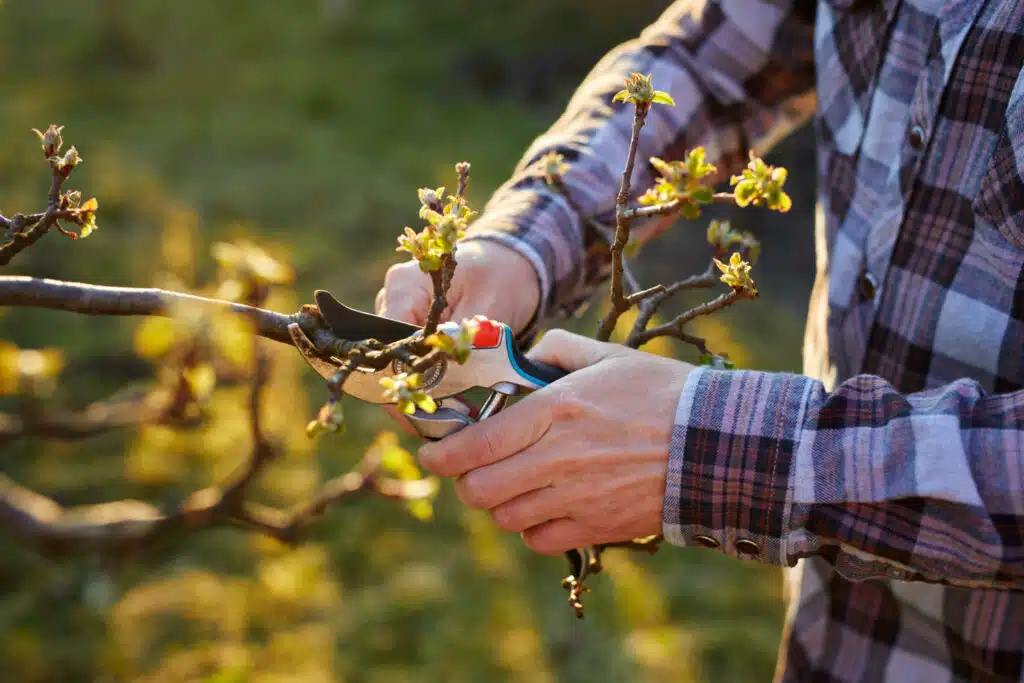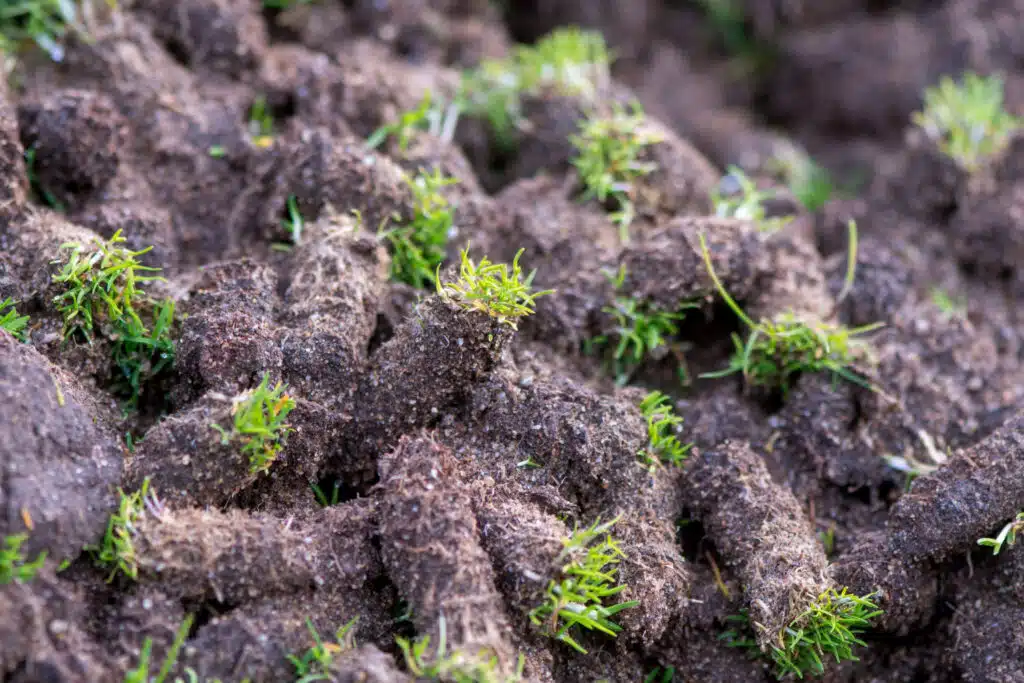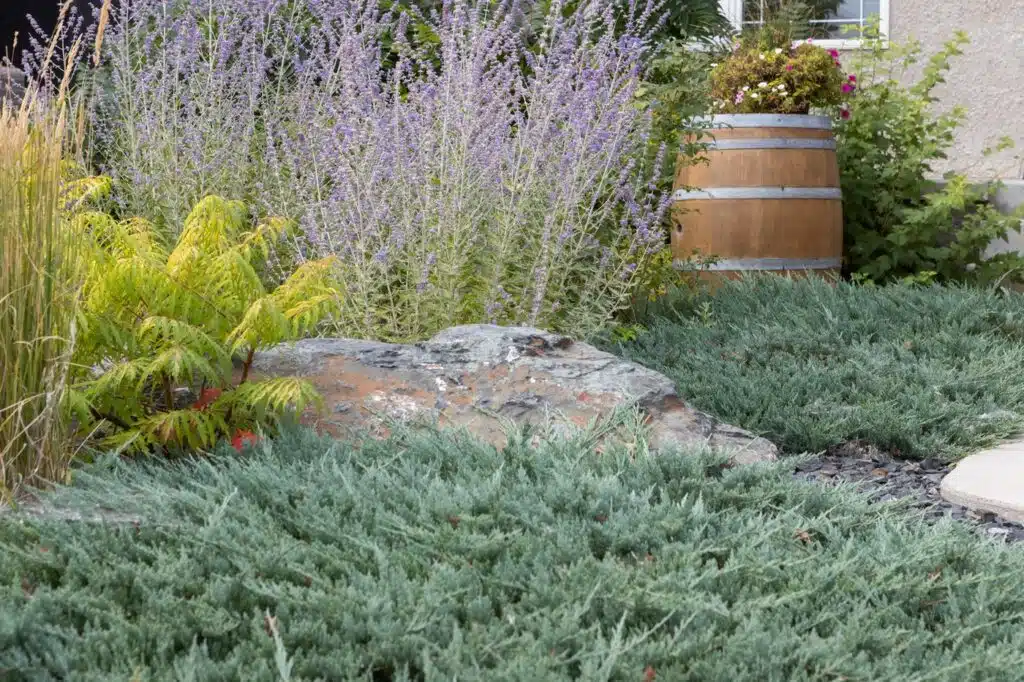Early spring is the perfect time to rejuvenate your yard after the harsh winter months. As the snow melts away, it reveals debris, dead foliage, and other remnants of winter. A thorough spring yard cleanup sets the stage for a lush and vibrant outdoor space throughout the warmer months. From removing debris to fertilizing and pruning, there are several essential tasks to tackle for a successful spring cleanup.
Clearing Debris: A Fresh Start
The first step in any spring yard clean up is to clear away the debris that accumulated over winter. Fallen branches, dead leaves, dead grass, and other clutter not only detract from the appearance of your yard but can also harbour pests and disease. Rake up leaves and pick up any larger debris that may have blown into your lawn during winter storms. Dispose of or compost organic debris, and gather any non-biodegradable items for proper disposal. Don’t forget, salt residue from sidewalks and streets can damage lawns — a gentle rinse can help.
Apply Fertilizer: Nourish for Growth
Once the debris has been cleared, it’s time to give your lawn and plants a much-needed boost of nutrients with fertilizer. Winter can deplete the soil of essential nutrients, leaving your plants hungry for food. Choose a high-quality, slow-release fertilizer formulated for spring use, and apply it according to the manufacturer’s instructions. Spring fertilization help promote healthy growth and vibrant blooms throughout the growing season.
Choosing the Right Fertilizer
When selecting a fertilizer for your spring yard clean up, consider the specific needs of your lawn and plants. Use fertilizers rated for Zone 3 or tailored to prairie soil conditions. Look for a balanced formula that contains nitrogen, phosphorus, and potassium, as well as micronutrients like iron and magnesium. Organic options, such as compost or manure, are also available for those looking to take a more natural approach to fertilizing.
Prune: Shaping for Health
Pruning is an essential part of the cleanup, helping to remove dead or damaged branches, shape overgrown shrubs, and encourage new growth. By pruning your trees and shrubs early in the spring, you can set the stage for healthy growth and abundant blooms throughout the season.
Pro Tip: Avoid pruning early-flowering shrubs like lilacs until after they bloom — a common mistake in Winnipeg gardens.

Removing Deadwood
Start by inspecting your trees and shrubs for damaged and dead branches that need to be removed. Deadwood not only detracts from the appearance of your landscape but can also pose a safety hazard if left unchecked. Use a pair of sharp pruning shears or a pruning saw to carefully cut away dead or diseased branches, making clean cuts just above a healthy bud or branch collar.
Lawn Aeration: Breath of Fresh Air
Lawn aeration is a vital step, helping to improve soil compaction, promote healthy root growth, and enhance overall lawn health. Late April to early May is ideal for aeration in Winnipeg, once soil has thawed. By aerating your lawn, you can ensure that your grass receives the oxygen, water, and nutrients it needs to thrive throughout the growing season.

Understanding Aeration
Aeration involves perforating the soil with small holes to allow air, water, and nutrients to penetrate the soil. Especially in Winnipeg, soil can become compacted during winter, making it difficult for grass roots to access the essential elements they need for growth. Aeration helps alleviate compaction, creating channels for air and water to reach the roots and promoting healthy soil structure.
Plant and Mulch: Setting the Stage
Once your lawn has been cleared of debris, fertilized, pruned, and aerated, it’s time to add the finishing touches by planting new flowers, shrubs, and trees and apply fresh mulch. Planting and mulching not only enhance the appearance of your landscape but also help conserve moisture, suppress weeds, and protect plant roots from temperature extremes.

Choosing Plants
When selecting plants for your spring garden, consider factors such as sun exposure, soil type, and water requirements. Choose plants that are native to Manitoba. Opt for a mix of perennials, annuals, shrubs, and trees to add variety and interest to your yard.
Spring is the perfect time to give your yard the attention it needs to thrive throughout the warmer months. By following these cleanup tips, you can create a vibrant outdoor space that you’ll enjoy all season long. Remember to start by clearing away debris, then nourish your lawn and plants with fertilizer, prune trees and shrubs for health and shape, aerate your lawn for optimal growth, and finally, add new plants and mulch to enhance the beauty of your landscape. With a little effort now, you’ll reap the rewards of a beautiful yard for months to come.
FAQs
1. Q: When is the best time to start spring yard cleanup?
A: The best time to start is as soon as the weather begins to warm up and the snow starts to melt. Ideally, you’ll want to tackle the task early in the spring to give your yard plenty of time to recover and thrive throughout the growing season.
2. Q: How often should I fertilize my lawn during spring cleanup?
A: It’s generally recommended to fertilize your lawn once in early spring and again in late spring or early summer. This will help provide your grass with the nutrients it needs to grow healthy and strong throughout the growing season.
3. Q: Can I prune trees and shrubs anytime during the spring?
A: While spring is an ideal time for pruning, it’s essential to avoid pruning certain trees and shrubs while they are flowering. Pruning at the wrong time can reduce or eliminate the following year’s blooms. Be sure to research the specific pruning requirements for each plant in your yard.
4. Q: Is lawn aeration necessary every spring?
A: Lawn aeration is generally recommended at least once a year, preferably in early spring or fall when the soil is not too dry or frozen. However, the frequency of aeration may vary depending on factors such as soil compaction, foot traffic, and overall lawn health.
5. Q: What type of mulch is best for my garden?
A:There are several types of mulch available, including organic options like wood chips, bark, and compost. For inorganic options there is rubber and landscape fabric. The best type for your garden will depend on factors such as plant preferences, climate, and aesthetic preferences.
Contact us today to get your free landscaping quote, so we can design your new landscape where functionality and beauty meet!
